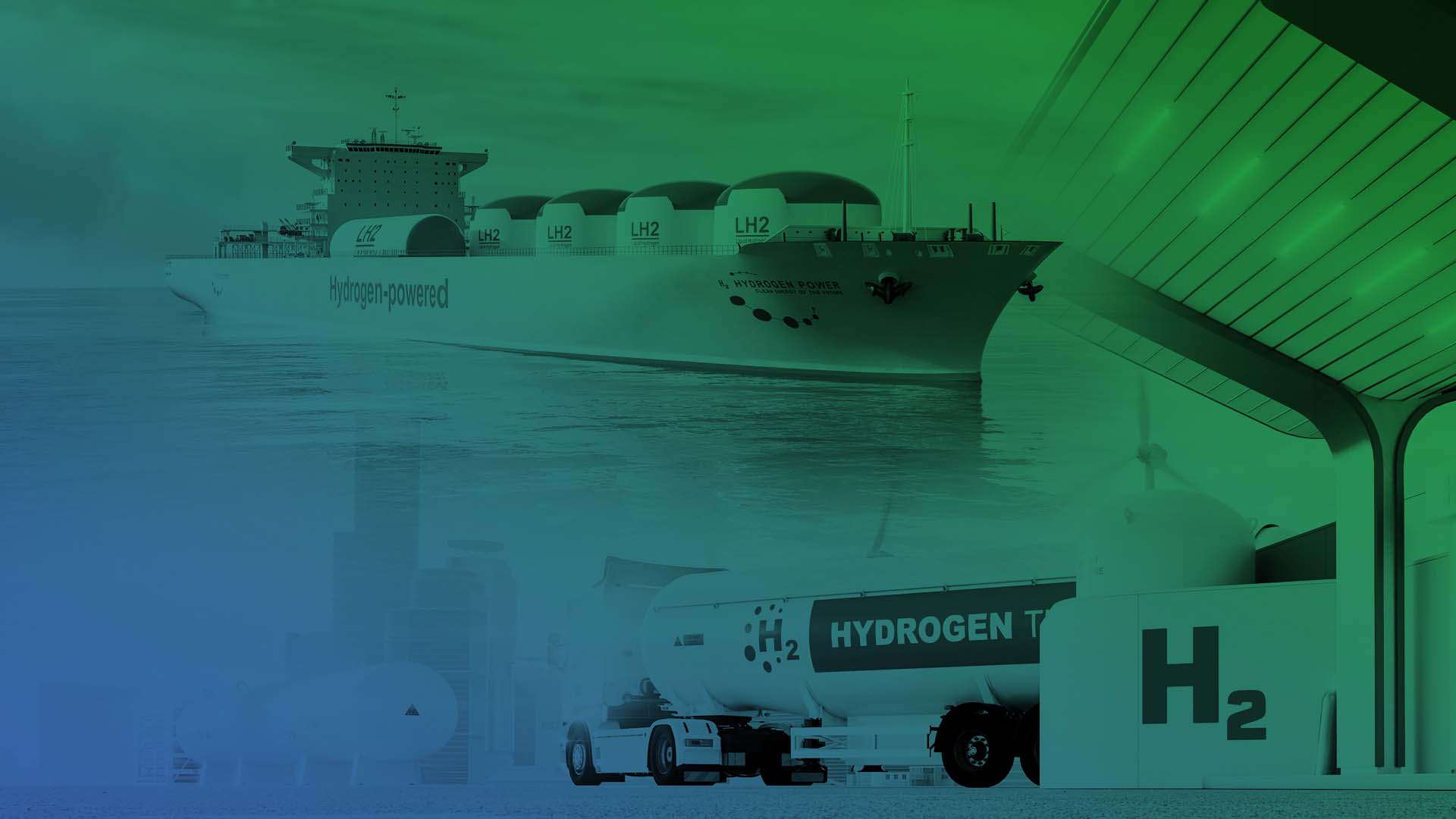Hydrogen distribution by land and sea
EcoEnergyH2
Synergy of hydrogen energy technology areas

The transport of hydrogen in large volumes will become increasingly important in the coming years due to its growing popularity in road transport and as a fuel for shipping.
The transport of hydrogen in large volumes will gain enormous importance in the coming years due to the growing popularity in road transport and as a fuel for shipping. In order to ensure the appropriate development of the hydrogen market, it is necessary to enable the distribution and transport of significant quantities of hydrogen fuel on reasonable economic terms, divided into the distribution of hydrogen by land and sea, with EcoEnergyH2 using its own port quay of approx. 300 m in length, enabling, among other things, sea shipping of hydrogen, as well as bunkering of ships with hydrogen fuel on the Baltic Sea and launching a coastal ship refueling station in the area of the Szczecin Lagoon.
Hydrogen distribution by land
In the shorter term, hydrogen could be used as a fuel for "heavy-duty" transport (including coaches and special-purpose vehicles) and long-distance road freight transport. The applications of hydrogen fuel cell propulsion in rail transport could be expanded.
The development of hydrogen-powered vehicles may be accelerated by public transport – larger cities are reaching for hydrogen buses, and with them, refueling stations will appear.
Liquid hydrogen delivered to the station will be compressed to high pressure on site using cryogenic compressors and then evaporated to gaseous form. In this form, the hydrogen will be able to be sent via special dispensers to refueled vehicles.
Hydrogen distribution by sea
Hydrogen as a fuel in shipping is becoming a reality.
The use of hydrogen as a fuel for shipping is a real revolution in maritime transport. Until now, completely emission-free propulsion was only possible in electric units, such as ferries operating on short routes. Now, seagoing ships will also sail completely emission-free.
Liquefying hydrogen in port [after pyrolysis] reduces its volume 800 times, which makes it much easier to transport. Especially since transporting gas in a liquefied state by ship is nothing new. LNG must be transported at a temperature of -162 degrees Celsius, and transporting liquefied hydrogen requires a temperature even lower by 91 degrees.
Having our own port quay with a length of approx. 300 m creates the possibility of launching a shore-based refuelling station for ships and hydrogen bunkering for ships in the area of the port in Świnoujście. This is also a potential for the development of hydrogen export by sea in specially built ships. A ship transporting hydrogen, for example from Australia to Japan, is 116 m long and 19 m wide, so it can, for example, moor at a quay accessible to the Company.
In Norway, a consortium of 4 companies – Wilhelmsen, Equinor, DNV GL and Moss Maritime – will build the first vessel for transporting and bunkering liquid hydrogen.
The hydrogen bunker will have tanks with a capacity of 9,000 m3.
Liquid hydrogen (LH2) will be stored at a temperature of -253 degrees Celsius.
The designed ship will be able to carry 9,000 m3 of liquid hydrogen (LH2 – Liquid Hydrogen). In addition to its distribution functions between ports, it will also be able to bunker vessels powered by liquid hydrogen.
Mobile hydrogen refueling stations should be created, with hydrogen delivered by tankers or hydrogen bunkering support vessels. A catamaran of about 30 meters in length with evenly distributed weight and a dedicated port [its own pier in the port of Świnoujście] for hydrogen refueling should also be built. The unit will be designed to be able to maintain its position on the water for a longer period of time. Even in the event of waves or strong wind [the propulsors are planned to be placed on the sides of the ship]. Such a solution should allow it to maintain its position even in winds blowing at a speed of over 25 knots.
The project will also be a good test for alternative hydrogen and fuel cell drive solutions, and will be an important test and determinant of ways to overcome possible technical problems in the future.
Obtaining financing for the construction of such a unit is very realistic, because it should be only about 7% more expensive than a comparable vessel with a diesel engine.
The potential of technological synergy
EcoEnergyH2
Seawater electrolysis. Purchase of natural gas for own production needs. Energy production in an underground pumped-storage power plant.
The implementation of industrial-scale hydrogen production in the process of pyrolysis of natural gas together with the production of graphite will ultimately lead to its production in an emission-free process.
This is a process involving the liquefaction, compression and expansion of hydrogen in order to directly inject hydrogen into underground storage.
The transport of hydrogen in large volumes will become increasingly important in the coming years due to its growing popularity in road transport and as a fuel for shipping.
The transport of hydrogen in large volumes will become increasingly important in the coming years due to its growing popularity in road transport and as a fuel for shipping.
